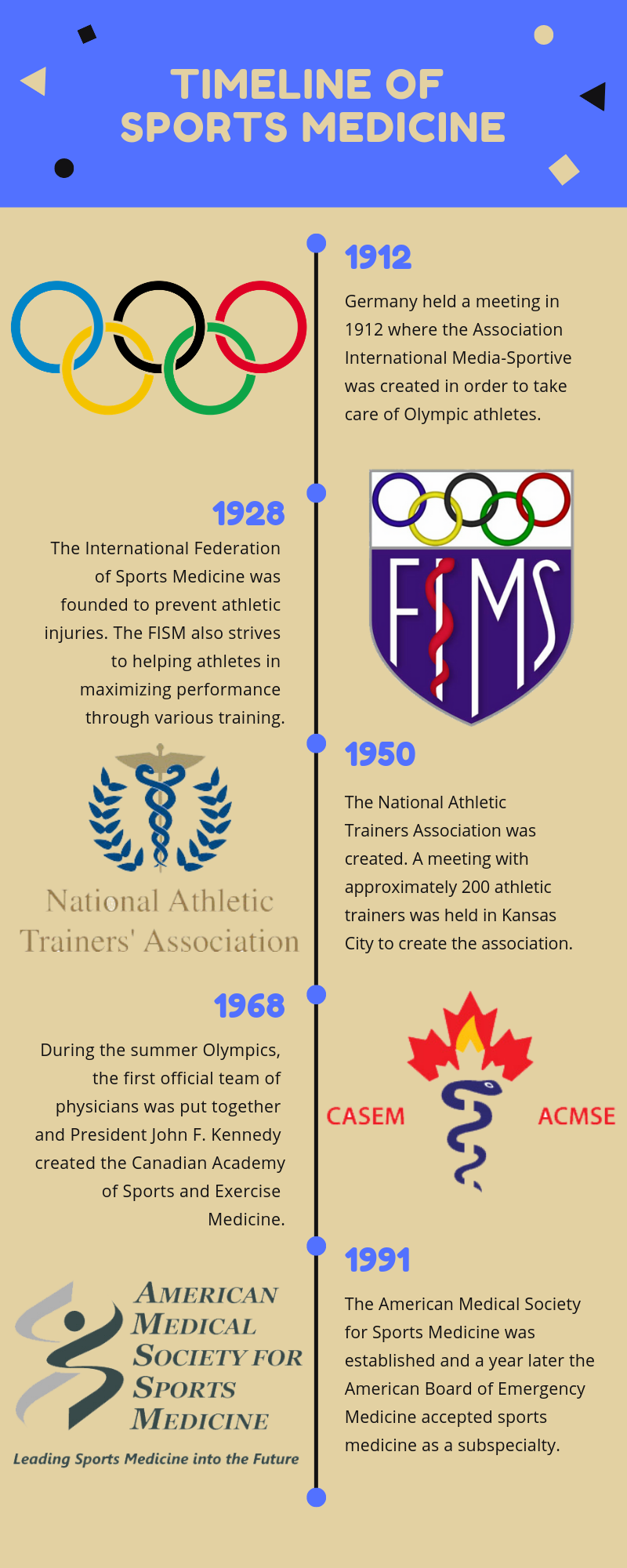

Sports medicine is constantly evolving and becoming an increasingly necessary field. It is used to enhance athletic performance, as well as prevent injuries and rehabilitate injured athletes. Sports medicine physicians help athletes with their injuries, with some specializing in surgery, while others focus on recovery.
Today, sports medicine is more widely known and appreciated than ever. Researchers publish hundreds of studies regarding causes, treatments and preventions of athletic injuries each year. These studies, once proven, help increase our understanding of certain injuries.
For example, the understanding of concussions dramatically improved due to constant observation, documentation and testing of head injuries. This new knowledge about concussions lead to the development of concussion testing, which is an important tool that is now being increasingly used with both professional and amateur athletes.
Sports medicine continues to grow and develop as the years go on.
“For other fields that you can go into with sports medicine like coaching and chiropractic, the technology that they are using in these fields is vastly growing and improving,” said Sonoma State senior Matthew Fowler, a member of the Aragon Class of 2015.
Currently, Fowler is spending a year abroad studying sports medicine in Australia.
“The technology that they are using now that they didn’t have 10 years ago is honestly incredible, he said. “I’ve had that opportunity to work with sports equipment that is able to monitor your heart rate, speed, vertical leap, etc. that you can just wear as a button on your shirt.”
In addition to technological innovations, increasing research on treatment methods bring advancements in sports medicine.
“I think there will be lots of changes,” said Aragon athletic trainer Daniel Walker. “More studies will come out showing more about different treatment modalities – which ones work, which ones don’t.”
Prominent careers in sports medicine include becoming an athletic trainer, physical therapist, nutritionist, biomechanist or medical doctor. Each of these career paths require different levels of schooling and other requirements. For example, to be a physical therapist, a master’s degree and a state license is required. However, to study the field of sports medicine and pursue any of these careers, many science classes are necessary.
“You have to really enjoy science,” Fowler said. “You have to learn the basics of chemistry, physics; some biology classes like anatomy and physiology.”
Most of the career paths available through the study of sports medicine require more than a bachelor’s degree.
“It’s a lot of school. You have to like school and dealing with athletes,” Walker said.
As sports remain a major part of American culture, the need for sports medicine will continue. For people who enjoy sports, science and medicine, a career in sports medicine is one of many paths that is available. Be it sports medicine or another field, Fowler advises students to pursue their interests.
“You will be successful in what you do depending on how hard you work and how much you truly love what you do,” Fowler said. “Don’t be afraid to try something and have it not work out, the ones that are afraid to try and fail are the ones who are truly missing out.”



